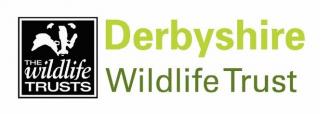
Derbyshire Wildlife Trust have released their State of Nature report highlighting the state of our county’s wildlife and wild places.
In partnership with Derbyshire Biological Records Centre, local wildlife groups and volunteers, the report collates the latest figures and information about the county’s species and where they live, against a backdrop of changing land use, climate change pressure and the fragmentation of suitable green spaces.
Statistics of concern show that many species such as water vole and white-clawed crayfish have dramatically declined in numbers in the county due to habitat loss, intensive farming, species persecution and climate change factors.
However, the report also celebrates success stories with thriving species and habitats. Otters have returned to most of Derbyshire’s rivers over the past 20 years after being absent due to persecution and poisoning from agricultural pesticides. Tighter environmental regulations cleaning our rivers, means that Otters have been able to thrive. This is one of the best examples of what can happen when we simply stop polluting our rivers and allow nature to recover.
Invertebrate species including the ivy bee and cinnamon bug have arrived over the last 20 years; these were previously restricted to the south of Derbyshire and are now expanding north due to climate change.
Kieron Huston, Derbyshire Wildlife Trust’s Biodiversity Planning and Policy Manager said that the report “...makes for some sober reading, we know our wildlife is in trouble. However, the evidence and data gives us the latest picture across the region so we can focus our efforts and resources where they are most needed and where we can work with others to have the best impact for more of our precious wildlife and wild places.”
Data from the report will be used to help find the best and most appropriate actions to improve Derbyshire’s nature in the future and to help identify more areas where homes for wildlife can be extended or improved.
Key headlines
- 1 in 4 (or 304) of our native plant species are included on the Derbyshire Red Data List. Which means species like heath speedwell, field scabious and ragged robin are threatened, rare or scarce at a national or local scale. Some of these plants have always been relatively rare in Derbyshire, many others have declined or exist in precariously small populations.
- There are estimated to be between 300 and 400 ha of open mosaic habitat – a patchwork of wild habitat like this is more valuable for a range of different species. At least half is threatened and hundreds of hectares have already been re-developed during the past 10 years.
- The Government’s farmland bird indicator has shown a 48% decline in these birds since 1970, including corn bunting, tree sparrow, turtle dove, grey partridge, lapwing, skylark, yellowhammer and linnet.
- Only around 5.5% of Derbyshire’s moorland habitat – one of the best habitat type for locking up carbon from the atmosphere - are in the best or favourable condition. The majority 93% in an unfavourable recovering condition according to Natural England. These habitats also have a long recovery time.
- All of the amphibians including frogs and toads are thought to have declined to some degree due to the extensive loss of farm ponds and problems with pollution and eutrophication of water bodies.
- Good news otter has returned to most of Derbyshire’s rivers over the past 20 years and is now breeding in the County. Two species have been re-introduced hazel dormouse and beaver. BUT some, once common, species are declining including; water vole, brown hare, hedgehog, rabbit and locally badger.
Numerous organisations, landowners, voluntary groups and businesses are already working hard to improve habitats and species populations across Derbyshire and there have been many success stories through habitat creation and restoration schemes, as well as targeted species projects, but the report states that there is much more to be done.


